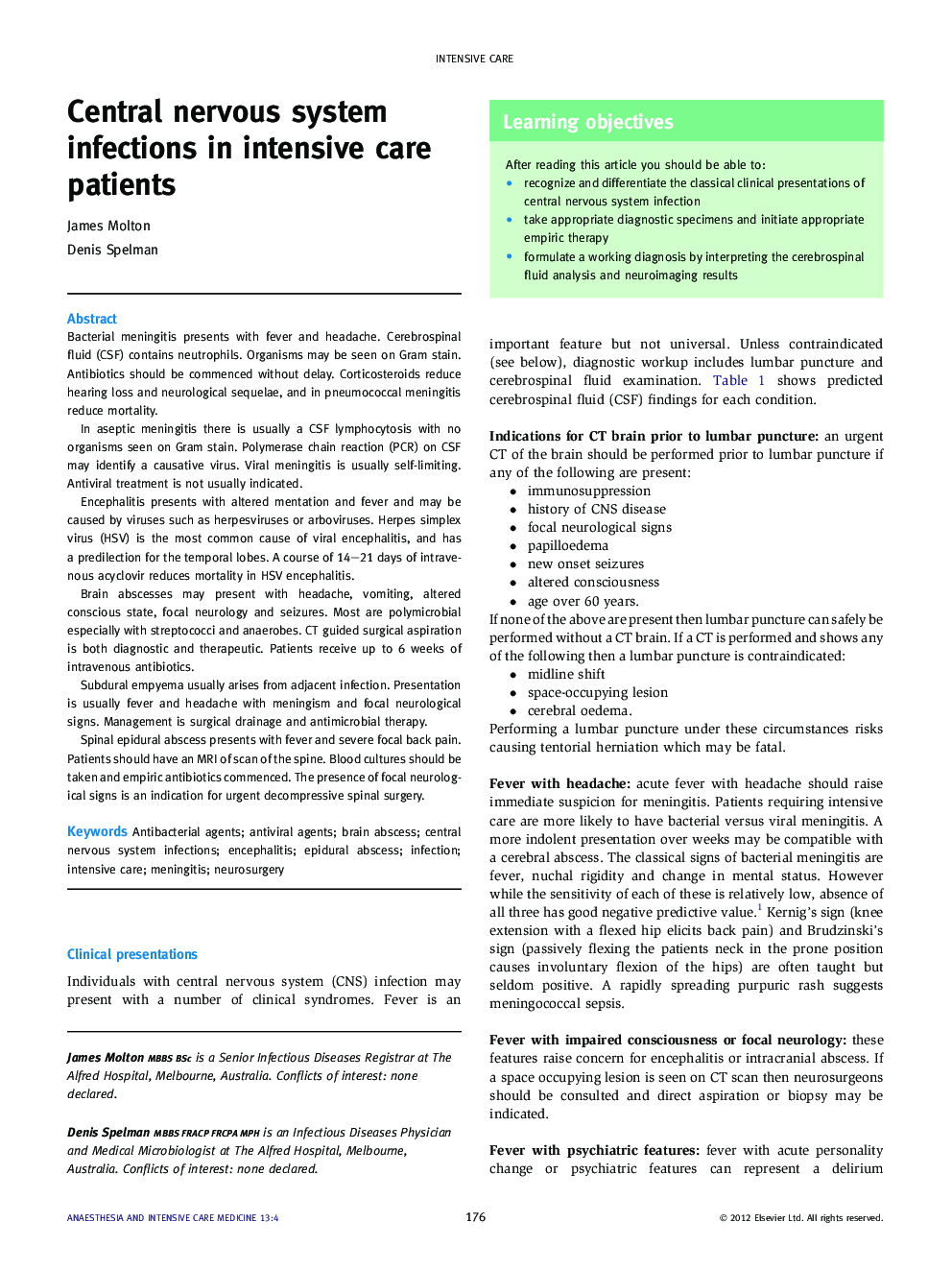| Article ID | Journal | Published Year | Pages | File Type |
|---|---|---|---|---|
| 2743152 | Anaesthesia & Intensive Care Medicine | 2012 | 5 Pages |
Bacterial meningitis presents with fever and headache. Cerebrospinal fluid (CSF) contains neutrophils. Organisms may be seen on Gram stain. Antibiotics should be commenced without delay. Corticosteroids reduce hearing loss and neurological sequelae, and in pneumococcal meningitis reduce mortality.In aseptic meningitis there is usually a CSF lymphocytosis with no organisms seen on Gram stain. Polymerase chain reaction (PCR) on CSF may identify a causative virus. Viral meningitis is usually self-limiting. Antiviral treatment is not usually indicated.Encephalitis presents with altered mentation and fever and may be caused by viruses such as herpesviruses or arboviruses. Herpes simplex virus (HSV) is the most common cause of viral encephalitis, and has a predilection for the temporal lobes. A course of 14–21 days of intravenous acyclovir reduces mortality in HSV encephalitis.Brain abscesses may present with headache, vomiting, altered conscious state, focal neurology and seizures. Most are polymicrobial especially with streptococci and anaerobes. CT guided surgical aspiration is both diagnostic and therapeutic. Patients receive up to 6 weeks of intravenous antibiotics.Subdural empyema usually arises from adjacent infection. Presentation is usually fever and headache with meningism and focal neurological signs. Management is surgical drainage and antimicrobial therapy.Spinal epidural abscess presents with fever and severe focal back pain. Patients should have an MRI of scan of the spine. Blood cultures should be taken and empiric antibiotics commenced. The presence of focal neurological signs is an indication for urgent decompressive spinal surgery.
